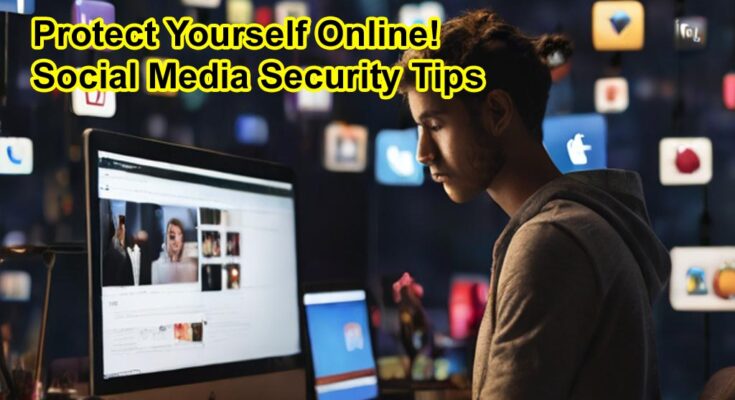In today’s digital age, social media has become an integral part of our lives. From connecting with friends and family to networking with professionals, social media platforms offer countless opportunities. However, with these opportunities come risks. Cyber threats such as hacking, identity theft, and phishing scams are on the rise, making it crucial to prioritize online security. In this comprehensive guide, we’ll explore effective strategies to protect yourself online and ensure a safe and enjoyable social media experience.
Understanding the Risks
Before delving into security measures, it’s essential to understand the potential risks associated with social media usage. Hackers and cybercriminals often target social media users for various malicious activities, including:
1. Identity Theft
One of the most significant threats on social media is identity theft. Cybercriminals can steal personal information such as names, addresses, and financial details to assume someone’s identity illegally.
2. Phishing Scams
Phishing scams involve fraudulent attempts to obtain sensitive information, such as passwords and credit card numbers, by masquerading as a trustworthy entity. These scams are prevalent on social media platforms, posing a significant risk to users.
3. Malware Distribution
Cyber attackers may distribute malware through social media platforms by disguising malicious links or attachments as harmless content. Clicking on such links can infect your device with malware, compromising your security and privacy.
Top Social Media Security Tips
Now that we’ve outlined the potential risks, let’s explore actionable tips to enhance your social media security:
1. Strengthen Your Passwords
Use strong, unique passwords for each social media account. Incorporate a mix of uppercase and lowercase letters, numbers, and symbols to create robust passwords that are difficult to crack.
2. Enable Two-Factor Authentication (2FA)
Two-factor authentication adds an extra layer of security by requiring users to provide two forms of verification before accessing their accounts. Enable 2FA whenever possible to prevent unauthorized access to your social media profiles.
3. Be Mindful of Privacy Settings
Review and adjust your privacy settings regularly to control who can see your posts, photos, and personal information. Limit the audience for your content to trusted friends and connections to minimize the risk of exposure to malicious entities.
4. Avoid Clicking on Suspicious Links
Exercise caution when clicking on links shared on social media, especially those from unknown or unverified sources. Be wary of unsolicited messages or posts containing suspicious links, as they may lead to phishing websites or malware downloads.
5. Keep Your Software Updated
Regularly update your device’s operating system, web browsers, and security software to patch vulnerabilities and protect against emerging threats. Set up automatic updates wherever possible to ensure you’re always using the latest software versions.
6. Educate Yourself About Social Engineering Tactics
Familiarize yourself with common social engineering tactics used by cybercriminals, such as pretexting and baiting. Stay vigilant and skeptical of unsolicited requests for personal or financial information, even if they appear to come from legitimate sources.
7. Monitor Your Account Activity
Keep an eye on your social media account activity for any signs of unauthorized access or suspicious behavior. Report any unusual activity to the platform’s support team and take immediate steps to secure your account.
8. Use a Virtual Private Network (VPN)
Consider using a VPN when accessing social media networks from public Wi-Fi hotspots or unsecured networks. A VPN encrypts your internet connection, providing an additional layer of privacy and security against potential eavesdropping and data interception.
Conclusion
Protecting yourself online is paramount in today’s digital landscape, especially when it comes to social media security. By implementing the tips outlined in this guide and staying vigilant against emerging threats, you can safeguard your personal information and enjoy a safer, more secure social media experience.
FAQs (Frequently Asked Questions)
How often should I update my social media passwords?
It’s recommended to update your passwords at least every three to six months to reduce the risk of unauthorized access.
Is it safe to share personal information on social media?
Exercise caution when sharing personal information online and avoid disclosing sensitive details such as your home address or financial information.
Can I trust third-party social media apps with my data?
Exercise caution when granting permissions to third-party apps and only choose reputable ones with transparent privacy policies.
What should I do if I suspect my social media account has been hacked?
Immediately change your password, enable 2FA if not already enabled, and report the incident to the social media platform’s support team.
How can I spot a phishing scam on social media?
Be wary of unsolicited messages or posts containing urgent requests for personal or financial information, and verify the sender’s identity before taking any action.




